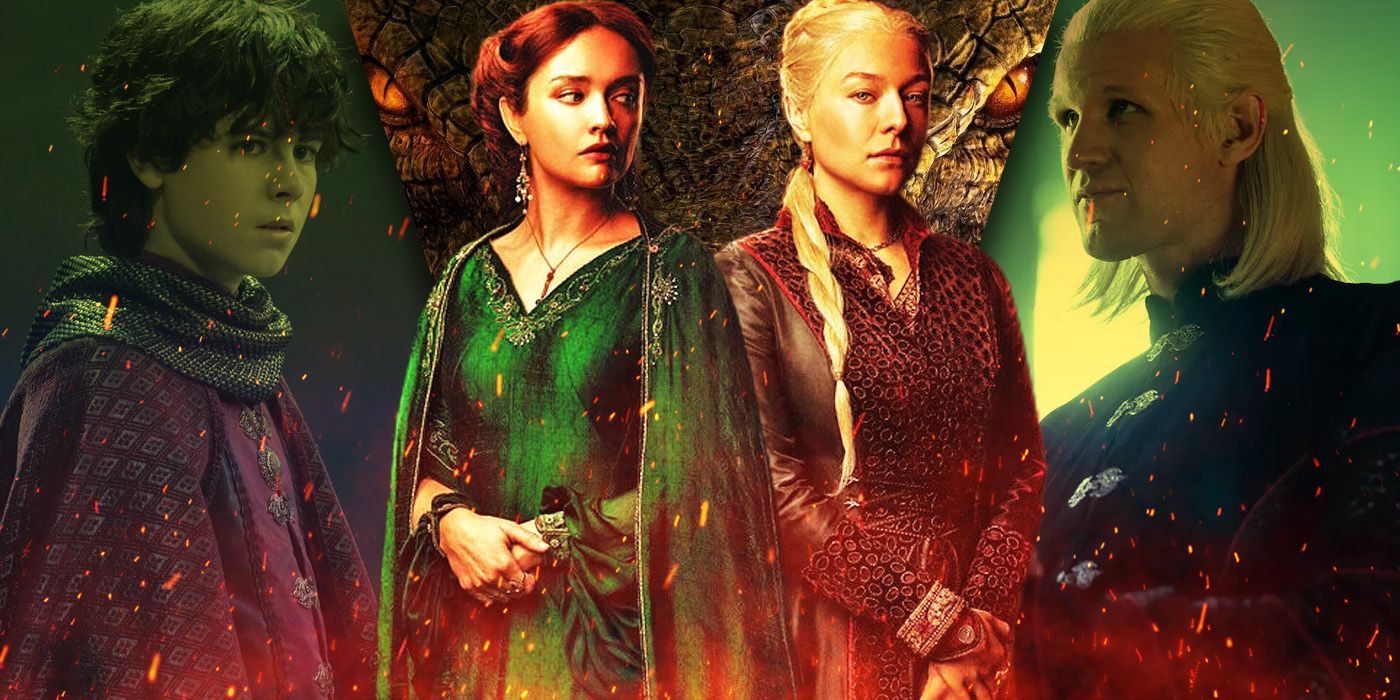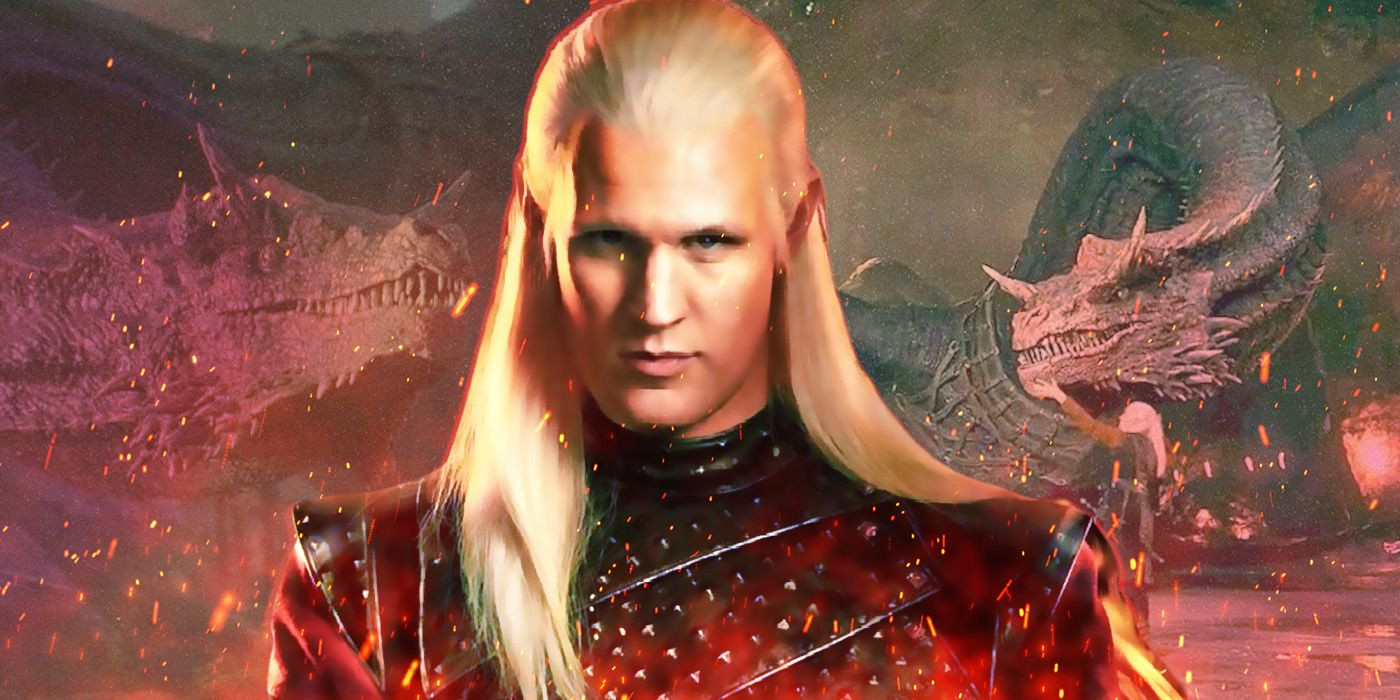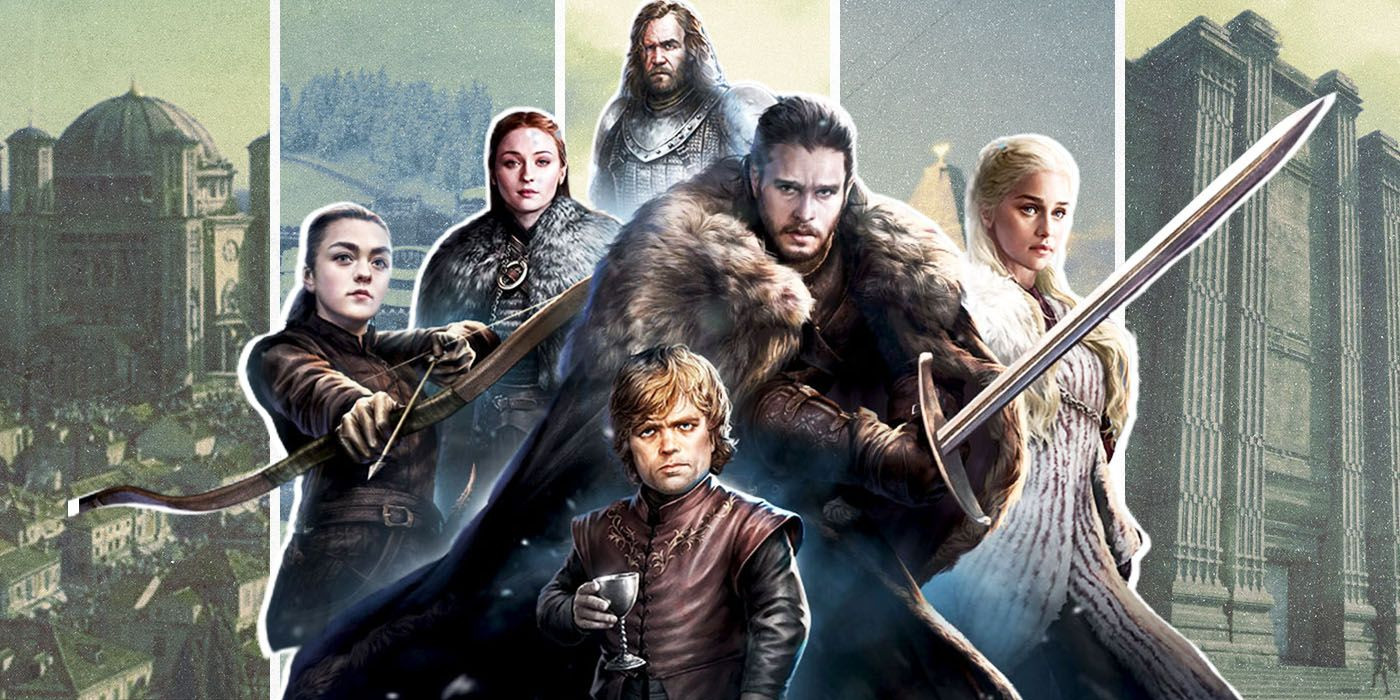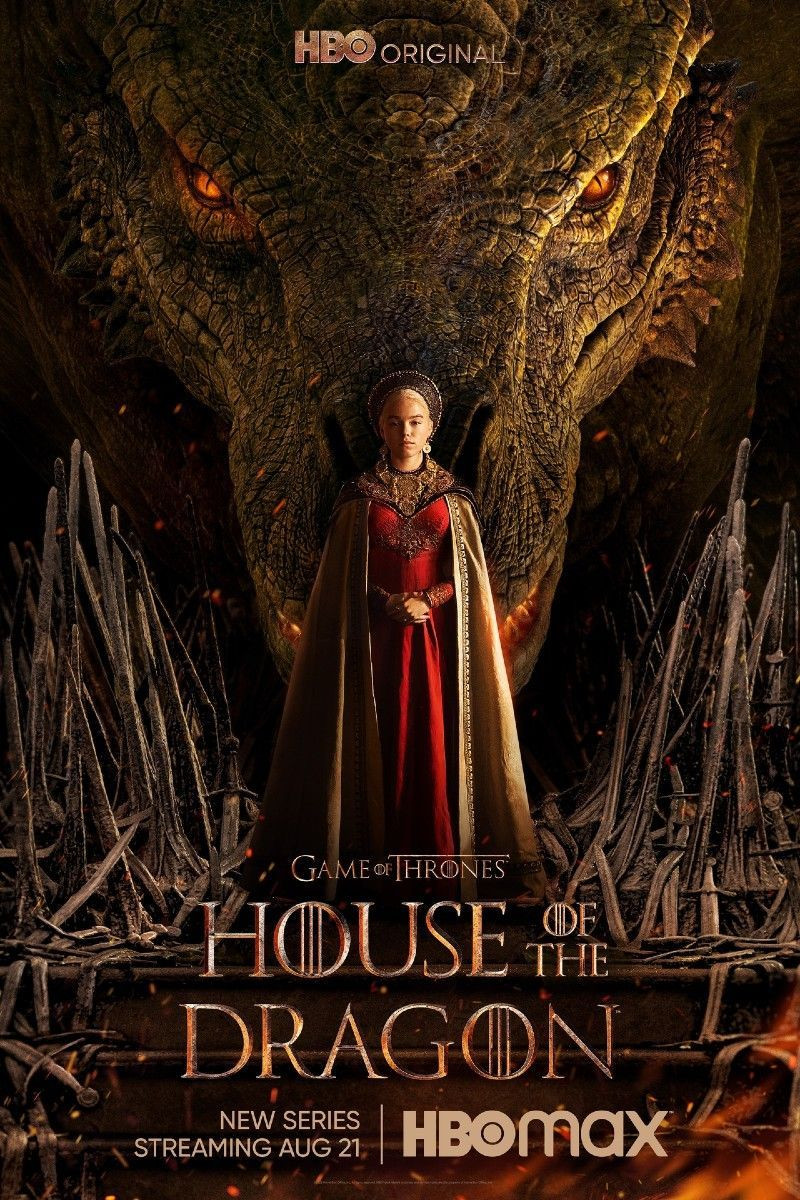The Dance of the Dragons was a brutal Targaryen civil war, a devastating conflict over succession that shaped the fate of Westeros for generations, as explained by ten-dance.com. This epic struggle, fueled by ambition and betrayal, pitted Targaryen against Targaryen, dragon against dragon, leaving a lasting scar on the realm. Ready to understand more about its history? Let’s explore the key moments and characters involved in this legendary clash and discover how it impacted the world of Game of Thrones, leading to a dramatic era of dragon warfare and Targaryen dynasty disputes.
1. What Was The Dance Of The Dragons?
The Dance of the Dragons was a Targaryen civil war of succession, a brutal and devastating conflict fought between two factions within House Targaryen over who would succeed King Viserys I Targaryen. The Dance of the Dragons was a war of succession between Rhaenyra Targaryen, Viserys’ daughter and chosen heir, and Aegon II Targaryen, Viserys’ eldest son from his second marriage.
The death of King Viserys I Targaryen in 132 AC triggered a succession crisis, leading to the Dance of the Dragons. According to George R.R. Martin’s “Fire & Blood,” King Viserys initially named his daughter Rhaenyra as his heir, making her the first woman to be named heir to the Iron Throne. This decision was contested following Viserys’ marriage to Alicent Hightower and the birth of their son, Aegon. A “coup of King’s Landing” occurred, with Alicent and her father, Otto Hightower, crowning Aegon II as King of the Seven Kingdoms, defying Viserys’s wishes. This action ignited the Dance of the Dragons, plunging Westeros into a brutal civil war. The Dance of the Dragons was not just a battle for the Iron Throne; it was a clash of ideologies, loyalties, and personal ambitions that shaped the future of Westeros and the Targaryen dynasty.
2. When Did The Dance Of The Dragons Begin?
The Dance of the Dragons began in 129 AC, after King Viserys I Targaryen’s death, igniting a fierce succession war. According to “Fire & Blood” by George R.R. Martin, Viserys’s death in 129 AC exposed the long-simmering tensions between the “Blacks” (supporters of Rhaenyra Targaryen) and the “Greens” (supporters of Aegon II Targaryen).
The conflict officially started when Aegon II was crowned in King’s Landing, despite Viserys having named Rhaenyra his heir. Rhaenyra, in turn, was crowned Queen on Dragonstone. The first act of war came with Prince Aemond Targaryen’s killing of Prince Lucerys Velaryon, Rhaenyra’s son, which escalated the conflict beyond political maneuvering into open warfare. This marked the beginning of a civil war that would see dragons clash in the skies and kingdoms torn apart by divided loyalties.
3. Why Was It Called The Dance Of The Dragons?
It was called The Dance of the Dragons due to the numerous dragon battles fought during the civil war. The name vividly captures the image of dragons soaring and clashing in the skies above Westeros.
The Dance of the Dragons was a period of intense dragon warfare, with Targaryen dragons battling each other in the skies. According to George R.R. Martin’s Fire & Blood, the Targaryens’ control over dragons made them a formidable force, but this strength turned into a vulnerability as the civil war pitted dragon against dragon. Battles such as the Battle at Rook’s Rest and the Battle Above the God’s Eye saw significant dragon combat, leading to the deaths of dragons and their riders. The “dance” refers not just to the aerial battles but also to the intricate and deadly political maneuvering that characterized the war.
 Rhaenyra Targaryen stands resolute, symbolizing her determination in the Dance of the Dragons
Rhaenyra Targaryen stands resolute, symbolizing her determination in the Dance of the Dragons
4. Who Were The Key Players In The Dance Of The Dragons?
Key players in the Dance of the Dragons included Rhaenyra Targaryen, Aegon II Targaryen, Alicent Hightower, Daemon Targaryen, and Otto Hightower. These individuals and others played pivotal roles in shaping the course of the war.
4.1. Rhaenyra Targaryen
Rhaenyra Targaryen, daughter of King Viserys I and initially named his heir, was a central figure in the Dance of the Dragons. Rhaenyra’s claim to the Iron Throne was based on her being the named heir of King Viserys I. As noted by Archmaester Gyldayn in Fire & Blood, Rhaenyra was a skilled dragonrider, bonding with the dragon Syrax at a young age. Her determination to claim her birthright and her strategic alliances defined her role in the war. Despite facing opposition, Rhaenyra’s resilience and leadership rallied many to her cause, making her a formidable contender for the Iron Throne.
4.2. Aegon II Targaryen
Aegon II Targaryen, the eldest son of King Viserys I and Alicent Hightower, also claimed the Iron Throne, leading to the Dance of the Dragons. According to accounts in Fire & Blood, Aegon was crowned in King’s Landing shortly after Viserys’s death, defying the king’s stated wish that Rhaenyra should succeed him. Aegon’s supporters, primarily from his mother’s side of the family, the Hightowers, saw him as the rightful heir due to his gender, reflecting the patriarchal norms of Westeros. Aegon II’s reign was marked by conflict and resistance, making him a controversial figure in Targaryen history.
4.3. Alicent Hightower
Alicent Hightower, Queen Consort to King Viserys I and mother of Aegon II, was a significant player in the Dance of the Dragons. Alicent’s influence in the Dance of the Dragons came from her position at court and her ambition for her son, Aegon. Historians like Maester Yandel in Fire & Blood describe her as a key figure in the Green Council, which plotted to crown Aegon II against Viserys’s wishes. Her actions were driven by a desire to secure her family’s legacy and maintain power within the realm. Alicent’s strategic alliances and political maneuvering played a crucial role in initiating and sustaining the war.
4.4. Daemon Targaryen
Daemon Targaryen, brother of King Viserys I and husband to Rhaenyra Targaryen, was a prominent and formidable figure in the Dance of the Dragons. Known as the “Rogue Prince,” Daemon was a fierce warrior and dragonrider, instrumental in Rhaenyra’s war efforts. Accounts in Fire & Blood describe Daemon as a key strategist and commander in the battles of the Dance of the Dragons. His marriage to Rhaenyra solidified her claim to the throne, and his skill on the battlefield made him a fearsome opponent. Daemon’s contributions to Rhaenyra’s cause were essential, but his unpredictable nature also made him a controversial figure.
4.5. Otto Hightower
Otto Hightower, Hand of the King to Viserys I and grandfather to Aegon II, was a key strategist and political influencer in the Dance of the Dragons. Otto’s primary goal was to secure the Iron Throne for his grandson, Aegon II. As noted in historical texts like Fire & Blood, Otto played a crucial role in forming the Green Council and orchestrating Aegon’s coronation. His experience in court and his ability to navigate complex political landscapes made him a formidable opponent to Rhaenyra and her supporters. Otto’s calculated decisions and strategic planning significantly shaped the early stages of the war.
 Aegon II Targaryen is crowned, signaling the start of the Dance of the Dragons
Aegon II Targaryen is crowned, signaling the start of the Dance of the Dragons
5. What Were The Main Events Of The Dance Of The Dragons?
The Dance of the Dragons encompassed several key events, including the coronation of Aegon II, the Storming of the Dragonpit, and numerous dragon battles. These events significantly shaped the course and outcome of the war.
5.1. The Coronation Of Aegon II
The coronation of Aegon II in King’s Landing was a pivotal event that triggered the Dance of the Dragons. According to accounts in Fire & Blood, the Green Council acted swiftly to crown Aegon II shortly after King Viserys I’s death, ignoring Viserys’s declared heir, Rhaenyra. The coronation was a public display of power, meant to solidify Aegon’s claim and rally support. This act was seen as a direct challenge to Rhaenyra’s legitimacy, setting the stage for open conflict and dividing the realm.
5.2. The Storming Of The Dragonpit
The Storming of the Dragonpit was a critical event during the Dance of the Dragons, resulting in the deaths of several dragons. As described in Fire & Blood, the Dragonpit in King’s Landing was attacked by a mob fueled by anti-Targaryen sentiment and resentment over the ongoing war. The dragons housed there were vulnerable, and many were killed, weakening the Targaryen’s dragon force significantly. This event marked a turning point in the war, demonstrating the growing instability in King’s Landing and the declining power of the dragons.
5.3. Major Dragon Battles
Major dragon battles were defining events in the Dance of the Dragons, illustrating the scale and intensity of the conflict. Notable battles included the Battle at Rook’s Rest and the Battle Above the God’s Eye. Historical accounts in Fire & Blood detail the strategic importance of these battles, where dragons clashed in the skies, leading to significant losses on both sides. The dragon battles not only determined military outcomes but also symbolized the Targaryen’s internal strife, as family members fought each other atop their dragons.
6. What Were The Factions Involved In The Dance Of The Dragons?
The factions involved in the Dance of the Dragons were primarily the “Blacks,” supporting Rhaenyra Targaryen, and the “Greens,” supporting Aegon II Targaryen. These factions were divided by loyalty, ambition, and differing views on succession.
6.1. The Blacks
The Blacks, supporting Rhaenyra Targaryen, consisted of those who believed in her right to inherit the Iron Throne as King Viserys I’s named heir. The Blacks were a coalition of houses and individuals who supported Rhaenyra’s claim based on Viserys’s explicit designation. Historical texts like Fire & Blood note that key supporters included House Velaryon, House Stark, and House Arryn, among others. The Blacks viewed Rhaenyra as the rightful ruler, and their loyalty was driven by a commitment to Viserys’s wishes and a belief in the importance of maintaining the stability of the realm.
6.2. The Greens
The Greens, supporting Aegon II Targaryen, were those who believed a male should inherit the Iron Throne, challenging Rhaenyra’s claim. The Greens were composed of those who favored Aegon II based on traditional Westerosi customs that prioritized male inheritance. As described in Fire & Blood, key supporters included House Hightower, House Lannister, and House Baratheon. The Greens argued that the Iron Throne should pass to the male heir to prevent instability and maintain the patriarchal structure of Westerosi society. Their stance reflected the deeply ingrained gender norms of the time.
 Daemon Targaryen and Caraxes soar above the battlefield
Daemon Targaryen and Caraxes soar above the battlefield
7. What Were The Consequences Of The Dance Of The Dragons?
The consequences of the Dance of the Dragons were far-reaching, leading to significant losses for House Targaryen, the death of many dragons, and lasting political instability. The Dance of the Dragons had a profound impact on Westeros, reshaping the political landscape and weakening the Targaryen dynasty.
7.1. Loss Of Dragons
One of the most significant consequences of the Dance of the Dragons was the loss of many dragons, which diminished the Targaryens’ power. According to historical accounts, many dragons were killed in battle or during the Storming of the Dragonpit. This loss weakened House Targaryen’s military strength and prestige. The dragons had been a symbol of Targaryen power, and their decline marked a turning point in the dynasty’s dominance.
7.2. Weakening Of House Targaryen
The Dance of the Dragons significantly weakened House Targaryen, both in terms of numbers and political influence. The internal conflict decimated the Targaryen family, with many members killed or left politically vulnerable. This loss of manpower and leadership undermined the Targaryen’s ability to govern effectively. The Dance of the Dragons exposed deep divisions within the family, eroding trust and stability.
7.3. Political Instability
The Dance of the Dragons led to long-term political instability in Westeros, with lingering resentment and challenges to the Targaryen rule. The brutal nature of the war and the division of loyalties created lasting divisions among the houses of Westeros. The aftermath of the Dance of the Dragons was marked by political turmoil and challenges to the Targaryen’s authority. The realm struggled to recover from the devastation, and the scars of the conflict remained for generations.
8. How Did The Dance Of The Dragons Affect Westeros?
The Dance of the Dragons profoundly affected Westeros by causing widespread destruction, loss of life, and long-term political and social consequences. The conflict altered the course of Westerosi history, leaving lasting scars on the realm.
8.1. Economic Devastation
The Dance of the Dragons resulted in significant economic devastation across Westeros, disrupting trade and destroying infrastructure. According to historical accounts, battles and sieges led to the destruction of towns, cities, and agricultural lands. The disruption of trade routes and the loss of resources caused widespread economic hardship. The realm struggled to recover from the financial strain of the war, affecting the lives of common people and the prosperity of the kingdoms.
8.2. Social Disruption
The Dance of the Dragons caused immense social disruption, leading to widespread displacement and a breakdown of social order. The war uprooted communities, creating refugees and exacerbating existing social tensions. The conflict also led to a breakdown of law and order, with increased crime and violence. The social fabric of Westeros was torn apart, leaving a legacy of trauma and division.
8.3. Changes In Succession Laws
The Dance of the Dragons led to significant changes in succession laws, particularly regarding female inheritance, though these changes were not always consistent. The Dance of the Dragons highlighted the complexities and challenges of succession, especially concerning female heirs. While Rhaenyra’s initial claim was based on being named heir, the conflict underscored the patriarchal norms of Westerosi society. The aftermath of the Dance of the Dragons saw debates and discussions about the rules of succession, though the issue remained contentious and unresolved, setting the stage for future conflicts.
9. What Was The Role Of Dragons In The Dance Of The Dragons?
Dragons played a crucial role in the Dance of the Dragons, serving as powerful weapons and symbols of Targaryen dominance, but also suffering significant losses. Dragons were central to the military strategies and outcomes of the Dance of the Dragons.
9.1. Military Power
Dragons provided immense military power to both sides of the Dance of the Dragons, capable of decimating armies and destroying fortifications. Dragons were used in key battles, such as the Battle at Rook’s Rest, where they turned the tide of the conflict. Their ability to rain fire upon enemies made them indispensable assets in warfare. The presence of dragons often determined the outcome of battles, underscoring their importance in the Dance of the Dragons.
9.2. Strategic Importance
Dragons held strategic importance in the Dance of the Dragons, with control of dragons influencing alliances and determining the course of the war. The side with more dragons had a significant advantage, leading both factions to seek out and protect their dragons. The ability to deploy dragons strategically could shift the balance of power, making them critical assets in the overall war effort. Dragons were not just weapons but symbols of power that influenced political dynamics.
9.3. Symbolic Significance
Dragons held symbolic significance, representing the power and prestige of House Targaryen and influencing the morale of both sides. Dragons were seen as symbols of Targaryen legitimacy and dominance, inspiring fear and awe among their enemies. Their presence on the battlefield bolstered the morale of their allies and demoralized their opponents. The symbolic importance of dragons was deeply intertwined with the Targaryen’s identity, making their role in the Dance of the Dragons all the more significant.
 Aemond Targaryen atop Vhagar, the largest dragon during the Dance of the Dragons
Aemond Targaryen atop Vhagar, the largest dragon during the Dance of the Dragons
10. What Was The Long-Term Impact Of The Dance Of The Dragons On The Targaryen Dynasty?
The long-term impact of the Dance of the Dragons on the Targaryen dynasty included a decline in dragon numbers, political instability, and a loss of prestige, ultimately contributing to the dynasty’s downfall. The Dance of the Dragons left a lasting legacy of weakness and division within House Targaryen.
10.1. Decline In Dragon Numbers
The most immediate and visible impact of the Dance of the Dragons was the significant decline in dragon numbers, weakening the Targaryens’ military might. The Dance of the Dragons resulted in the deaths of many dragons, both in battle and during the Storming of the Dragonpit. This loss made the Targaryens more vulnerable to external threats and internal rebellions. The decline in dragon numbers marked the beginning of the end for the Targaryen’s dominance.
10.2. Loss Of Prestige
The Dance of the Dragons led to a loss of prestige for House Targaryen, as the internal conflict exposed their vulnerabilities and divided loyalties. The brutal nature of the war and the family infighting tarnished the Targaryen’s reputation. The Targaryens were no longer seen as invincible rulers, undermining their authority and influence. The loss of prestige made it harder for the Targaryens to maintain control over Westeros.
10.3. Eventual Downfall
The Dance of the Dragons contributed to the eventual downfall of the Targaryen dynasty, setting the stage for future conflicts and rebellions that ultimately led to their ouster. The Dance of the Dragons created deep divisions within the Targaryen family, weakening their ability to govern effectively. The loss of dragons and the tarnished reputation made them vulnerable to challenges from other houses. The Dance of the Dragons planted the seeds of the Targaryen’s destruction, leading to their eventual downfall and the end of their reign.
Dive Deeper into the World of Dance with ten-dance.com
Ready to explore the fascinating world of dance and movement? At ten-dance.com, we offer a variety of resources for dancers of all levels, from beginners to professionals. Whether you’re looking to learn new techniques, discover different dance styles, or connect with a passionate community of dancers, ten-dance.com has something for everyone. Start your dance journey today and experience the joy and artistry of movement!
Interested in learning more? Visit ten-dance.com to discover a world of dance, including:
- Online dance lessons for all levels and styles
- A directory of local dance classes and studios
- Tips and techniques to improve your dancing
- A community forum to connect with other dancers
Ready to take the next step?
- Explore our class listings to find the perfect fit for your interests and skill level.
- Read our blog for the latest dance news, tips, and inspiration.
- Join our community forum to connect with fellow dance enthusiasts and share your passion.
Join the ten-dance.com community today and unlock your full dance potential! Feel free to contact us at 60 Lincoln Center Plaza, New York, NY 10023, United States. Phone: +1 (212) 769-7000 or visit our website ten-dance.com. Let’s dance together!
Frequently Asked Questions About The Dance Of The Dragons
1. What Was The Primary Cause Of The Dance Of The Dragons?
The primary cause of the Dance of the Dragons was the disputed succession to the Iron Throne following the death of King Viserys I Targaryen. The conflicting claims of Rhaenyra Targaryen and Aegon II Targaryen led to open warfare.
2. Who Were The Main Contenders For The Iron Throne During The Dance Of The Dragons?
The main contenders for the Iron Throne during the Dance of the Dragons were Rhaenyra Targaryen, the named heir of King Viserys I, and Aegon II Targaryen, his eldest son from his second marriage.
3. What Role Did Alicent Hightower Play In The Dance Of The Dragons?
Alicent Hightower played a significant role by supporting her son, Aegon II Targaryen, in his claim to the Iron Throne, forming the Green Council to advance his cause.
4. How Did Dragons Influence The Outcome Of The Dance Of The Dragons?
Dragons heavily influenced the outcome of the Dance of the Dragons, serving as powerful military assets capable of decimating armies and destroying fortifications. Their presence often determined the result of battles.
5. What Was The Storming Of The Dragonpit, And Why Was It Significant?
The Storming of the Dragonpit was an event where a mob attacked the Dragonpit in King’s Landing, killing several dragons. It was significant because it weakened House Targaryen’s dragon force and demonstrated growing instability in the capital.
6. Which Houses Supported Rhaenyra Targaryen During The Dance Of The Dragons?
Houses that supported Rhaenyra Targaryen during the Dance of the Dragons included House Velaryon, House Stark, and House Arryn, among others, who believed in her right to inherit the Iron Throne.
7. How Did The Dance Of The Dragons Affect The Number Of Dragons In Westeros?
The Dance of the Dragons significantly reduced the number of dragons in Westeros, with many being killed in battles or during the Storming of the Dragonpit, leading to their eventual decline.
8. What Were The Long-Term Political Consequences Of The Dance Of The Dragons?
The long-term political consequences of the Dance of the Dragons included political instability, weakened Targaryen authority, and changes in succession laws, though these changes were not consistently applied.
9. In What Ways Did The Dance Of The Dragons Weaken House Targaryen?
The Dance of the Dragons weakened House Targaryen through significant losses in family members and dragons, diminished prestige, and internal divisions that made it harder for them to govern effectively.
10. How Did The Events Of The Dance Of The Dragons Influence Later Events In Game Of Thrones?
The events of the Dance of the Dragons influenced later events in Game of Thrones by contributing to the Targaryen dynasty’s downfall, setting the stage for future conflicts and rebellions, and shaping the political landscape of Westeros for generations.
